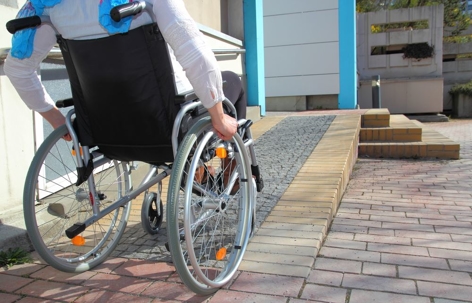Your home is meant to be a safe haven for everyone in your family—a place where every person can feel protected, comfortable, and a sense of belonging. If you have a child with cerebral palsy (CP), having a house without the right modifications can make them feel like a stranger in their own home.
The good news is that the right home modifications can help your child go anywhere they want without being stopped, limited, or fearing injury. This way, they can feel empowered to live as independently as possible and enjoy life to the fullest extent.
Three Tips for Home Modifications
Here are three pathways that you can consider in order to help make your home easier to navigate for children with cerebral palsy or other disabilities.
1. Make It Wheelchair-Friendly
If your child with CP has physical limitations and requires the use of a wheelchair or another wheeled support device, the first thing you should take into consideration is the accessibility of your home and whether it works for those on two wheels. Some specific home modifications that may be necessary may include the following:
If the home has multiple floors, consider adding a chair lift (also known as stair glides) to the staircase.
- Install access ramps from the parking area, to and around the front yard, and into the house.
- Doorways may need to be widened to accommodate wheelchairs moving through them.
- Choose anti-skid hardwood flooring or short carpeting rather than thick rugs.
- Move around furniture in a way that allows the individual in the wheelchair to move about freely.
2. Adapt Your Bathroom
The bathroom can be a place that presents difficulties for those with cerebral palsy or other physical disabilities. For example, if your child has trouble standing, sitting, or moving around, this area of your home may need to be modified to be safer and more accessible:
Install a lowered sink push/pull sink handles that are easy to use and reachable.
- Showers should be designed without a tub and have wide doorless openings.
- Consider adding a built-in shower seat or shower bars.
- Install grab bars next to toilets to give your child stable support when needed.
- Assess whether your child needs a free-standing or raised toilet.
3. Consider the Details
Lastly, don’t forget these small but important details when modifying your home to be more accessible:
Think about whether doorknobs or grips are easy to use without much effort.
- Consider installing automatic lights that turn on when someone enters a room.
- Add smart lights that allow individuals to control lights with their voices and/or smartphones.
- Look at the height of your home’s light switches, doorknobs, and shelving units; these should be accessible for the height of a person sitting in a wheelchair.
- Ensure the refrigerator is accessible, potentially with sliding doors or drawers.
- Assess whether you need “alert” devices in any areas of your home.
Helping Your Child Live the Best Life Possible
At The Law Firm of Michael H. Bereston, Inc., we recognize that paying for home modifications can be costly. If your child’s cerebral palsy was the result of a birth injury caused by a negligent doctor or medical provider, your family deserves the compensation needed to pay for medical expenses as well as any costs related to improving your child’s quality of life.
Our lead attorney, Michael Bereston, has over 30 years of trial experience helping families who have been wronged due to medical negligence. You can rest assured knowing that our team will go the extra distance to help your child obtain a brighter future.
Contact our firm at (410) 220-6581 to schedule your free consultation. We are located in Annapolis and also serve clients in Washington D.C. and across the country on a case-by-case basis.

